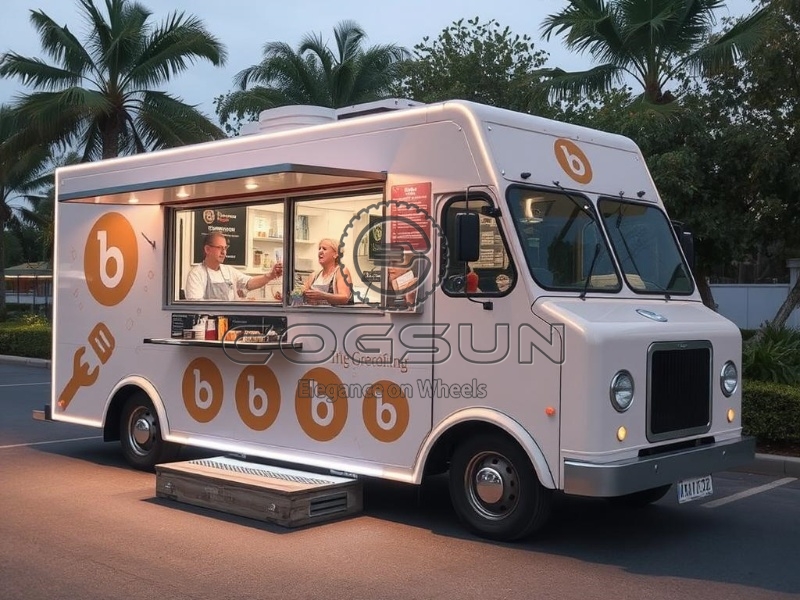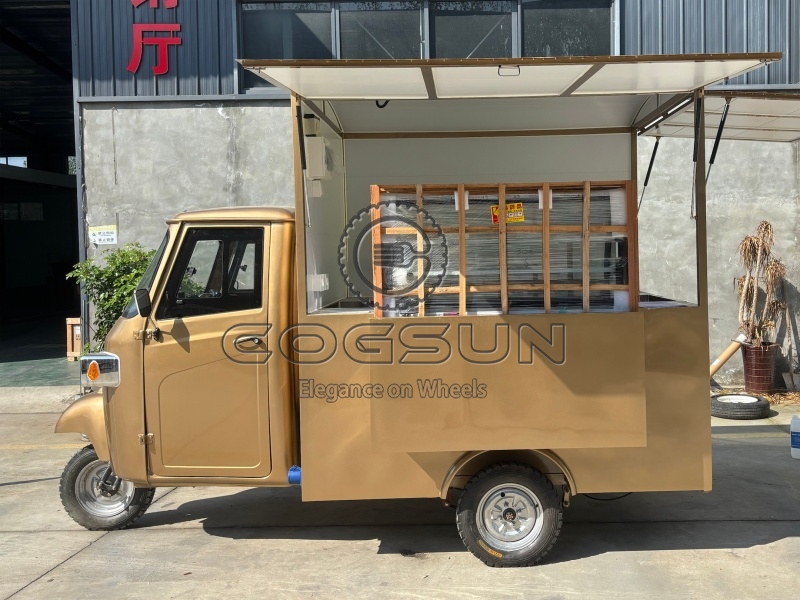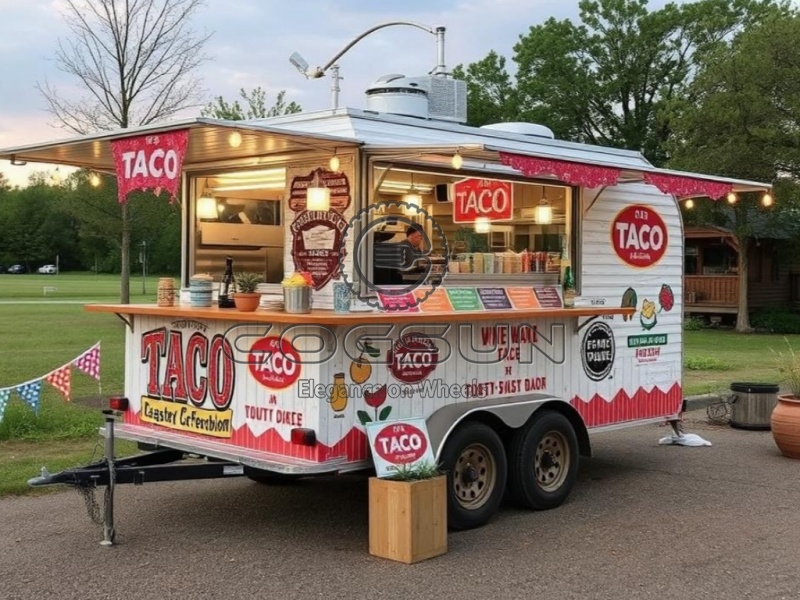Electric mobile food trucks are a new generation of mobile catering solutions powered by clean energy. They integrate environmentally friendly technologies, intelligent design, and modular functionality, designed specifically for the fast-paced lifestyle and diverse consumer scenarios of modern cities. Their core advantages lie in zero emissions, low noise levels, and low operating costs. Through flexible layouts and efficient equipment integration, they cater to diverse needs, from street food to high-end dining. Their body design combines a sense of technology with practicality. Their lightweight composite materials and solar-assisted power supply system ensure both longevity and sustainability, making them an innovative vehicle for urban green economies and cultural tourism.

Key Features
1.Environmentally friendly and energy-saving
- The pure electric drive system (select models equipped with a hydrogen fuel cell) achieves zero tailpipe emissions, in line with global carbon neutrality trends.
- Energy recovery technology: Energy is automatically converted into electricity during braking, extending driving range.
- Solar panel integration: Flexible photovoltaic modules are installed on the roof or side panels to provide auxiliary power for low-power devices (such as lighting and surveillance).
2.Intelligent connectivity
- Internet of Things (IoT) management system: Real-time monitoring of vehicle location, battery level, equipment status, and inventory data is provided, enabling remote fault diagnosis.
- Mobile Payment and Ordering System: Integrates POS, QR code scanning, and food delivery platform interfaces to improve operational efficiency.
- Digital Menu Screen: Supports dynamic pricing, multi-language switching, and social media interaction, enhancing the user experience.
3.Modular Design
- Quickly Switch Functional Modules: Removable partitions and standardized interfaces allow for easy conversion between kitchen, coffee bar, dessert station, and other modes.
- Expandable Space: Select models feature a retractable awning or tilt-down console, allowing for additional outdoor dining or service windows.
4.Compliance and Safety
- Complies with international food safety standards (such as HACCP), equipped with independent water, electricity, and waste disposal systems.
- Fire-retardant materials and automatic fire extinguishing devices ensure safe operation.
Internal Equipment Configuration
1.Power and Energy System
- High-density lithium-ion battery pack (capacity customized by model, supporting a range of 200-500 km).
- Fast charging port (charges to 80% in 1 hour) and home slow charging dual modes.
- Backup Power: A small diesel generator (optional) provides emergency response.
2.Core Kitchen Equipment
- Cooking Area: Induction cooktop, electric grill, steam oven, deep fryer (all electric, no open flame risk).
- Refrigeration System: Commercial-grade refrigerator, freezer, and separate beverage cooler.
- Washing Area: Stainless steel sink, dishwasher, water purifier, and wastewater recovery tank.
- Storage Area: Tiered shelving, insulated containers, and intelligent inventory management system.
3.Service Support Equipment
- Fresh Air System and Air Conditioning: Ensure comfortable air quality and temperature inside the vehicle.
- Audio and Lighting: LED ambient lighting and waterproof speakers for nighttime operation.
- Surveillance Cameras: 360-degree coverage for operational safety.
Application Areas
1.Urban Catering Services
- Commercial Districts and Office Building Areas: Provide fast-paced dining experiences such as quick lunches, coffee, and afternoon tea.
- Community Services: Serves as a “mobile vegetable market” or “senior dining hall,” solving last-mile delivery challenges.
2.Cultural Tourism and Event Economy
- Music Festivals and Sporting Events: Rapidly deploy specialty food stalls, eliminating the cost of setting up traditional food stalls.
- Scenic spots and campgrounds: Create immersive dining experiences, such as “Starry Sky BBQ Trucks” and “Forest Cafés.”
3.Brand Marketing and Retail
- Pop-up Stores: Collaborate with fashion brands to attract young consumers through customized food trucks.
- Product Tastings: Food companies use food trucks to promote new products and reduce store rental costs.
4.Emergency and Public Services
- Disaster Relief: Serving as mobile kitchens, they provide hot meals to disaster-stricken areas.
- Municipal Services: Cooperate with policies promoting the “street stall economy” and standardize the management of mobile vendors.




